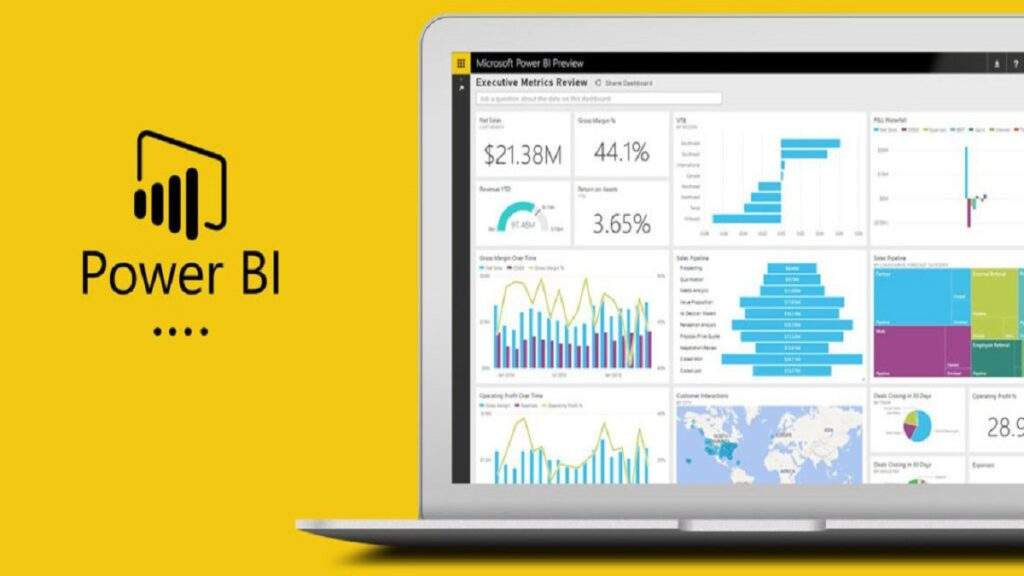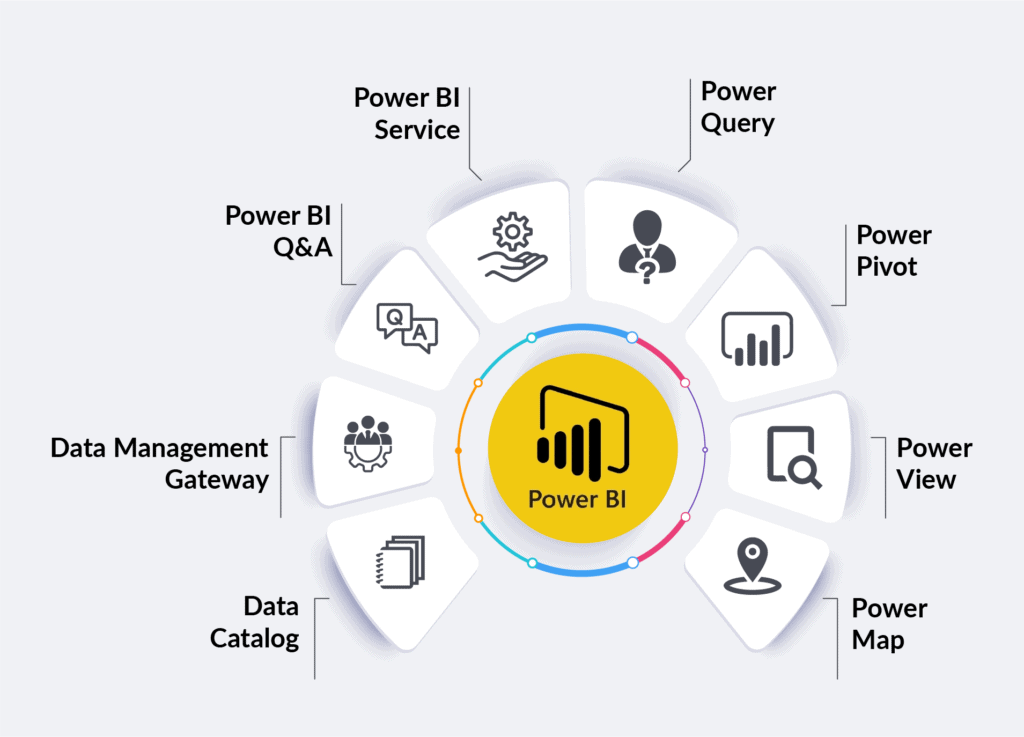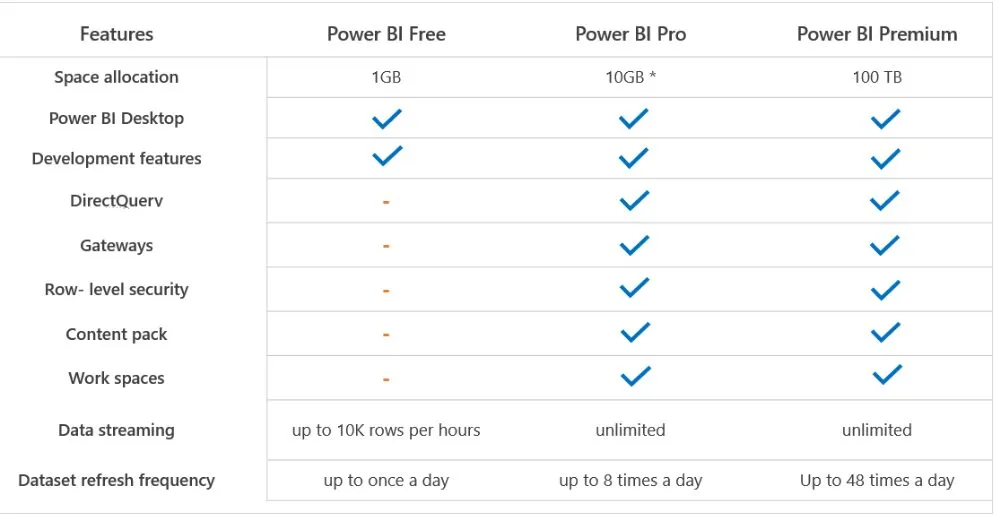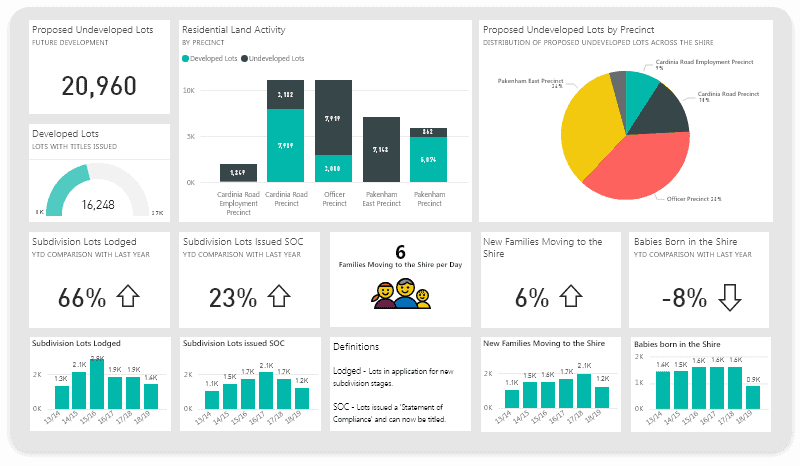
A Quick Guide on Power BI: Features, Licensing & Pricing
Are you looking to transform raw data into meaningful and visually appealing insights? Then you can bid adieu to your desperate efforts of making sense of your data with massive spreadsheets. Because now, we can leverage the power of a robust business intelligence tool, Power BI, to quickly turn your raw information into compelling visual insights.
Nowadays, businesses of all sizes need an intelligent tool to create interactive reports and dashboards that help make informed decisions. From analysing sales trends to monitoring social media engagement, Power BI has you covered. This article will uncover the enormous Power BI capabilities with its license subscription and pricing structure to help you decide wisely.
What is Power BI?
Microsoft Power BI is a suite of advanced analytics tools for businesses to analyse business data to drive continuous process improvement and share comprehensive business insights. Business Professionals can visualise and report data in various styles, such as charts, graphs, maps, etc. Even non-technical users can easily leverage the platform to perform in-depth data analysis operations, creating visually stunning reports.
Power BI Capabilities

Now that you have understood what Power BI is, it’s the right time to discuss its capabilities. It creates a data-driven culture to enable people to make informed business decisions with real-time analytics. Power BI allows you to create data visualisation suited for impactful presentations and seamlessly share them with your team across various devices.
Improve Collaboration
Power BI makes it simple and easy to collaborate with your team on reports and dashboards from any location and at any time. It makes it possible to analyse data, find real-time insights and forecast trends for various business objectives. Power Apps and Power Automate assist Power BI in creating business applications and automating workflows easily.
Enhance Data Visualisation
You can easily connect, organise and display your data in customised reports. Power BI offers a powerful visualisation of the data to convey the information effectively. Real-time analytics from various sources, including factory sensors, social media, etc., keep you well-prepared to make timely decisions for any business activity.
Seamless Excel Integration
Microsoft 365 users can easily connect Excel queries, data models, and reports to the Power BI dashboards. It simplifies the process of gathering, analysing, sharing and publishing Excel business data in innovative ways. You can show ranges of data, charts, and tables from different sources on the Power BI dashboard by linking your Excel workbook to Power BI.
Empower Your Team
Power BI uses Microsoft’s AI features to help non-data scientists prepare data, create machine learning models and quickly understand insights from structured and unstructured data like text, images, etc. You can also ask business questions using conversational language and receive quick, AI-powered responses.
Power BI Licensing Types

If you are interested in using Power BI to leverage its powerful capabilities, it’s essential to understand the different licensing options available. A Power BI license gives access to various functionalities and tools to help you effortlessly explore your data and gain significant insights. Let’s dive deep to understand the Power BI license types and how they can benefit your business.
The three kinds of Power BI licenses are discussed below:
Power BI free
The free license allows its users to use Power BI to connect with data and produce reports and dashboards for personal use. However, they cannot use the Power BI sharing or collaboration functionalities to work with others or disseminate content to the workspace of others.
Power BI Pro
Power BI Pro license for individuals allows users to create their content and view and use other people’s content on the Power BI service. The users with this license can collaborate with other Power BI Pro users sharing and working on content.
Power BI Premium Per User (PPU)
The premium license offers all Power BI Pro capabilities with the most premium capacity-based features. The Power BI Premium per-user license grants access to all the capabilities, features, etc. The PPU license holders can collaborate and share content in the PPU workspace.
Power BI Premium Per Capacity (PPC)
The Premium license based on capacity enables Pro or PPU users to generate and save content in the Premium Capacity workspace. They can share the workspace with their team members regardless of their license type. However, only Pro or PPU users can create and save content within Premium Capacity if their organisation has bought premium capacity.
Power BI Pricing

Microsoft adjusts the pricing of Power BI based on factors such as currency exchange rates, local taxes, etc., resulting in varying prices across regions. It ensures fair pricing for customers in different locations.
| Power BI Pro | Power BI Premium | |
| Per User | Per User | Per Capacity |
| $13.70 | $27.50 | $6858.10 |
Table 1: Power BI Pricing Structure in Australia (AUD) plus taxes
Note: Contact the team of Power BI Consultants at Dynamics Square to get the updated pricing.
Conclusion
Hopefully, you have learned everything about this cutting-edge data visualisation tool and how it can benefit your business. Power BI is an ideal solution for unlocking the full potential of your data due to its user-friendly interface, customisable dashboards and robust data modelling abilities.
If you plan to invest in Power BI, contact Dynamics Square today for the best price offers. Drive continuous process improvement powered by Power BI to grow with the changing times and stay ahead of the competition.
Revamp Your Business with Microsoft Power BI
Read More: https://www.infoforeks.com/